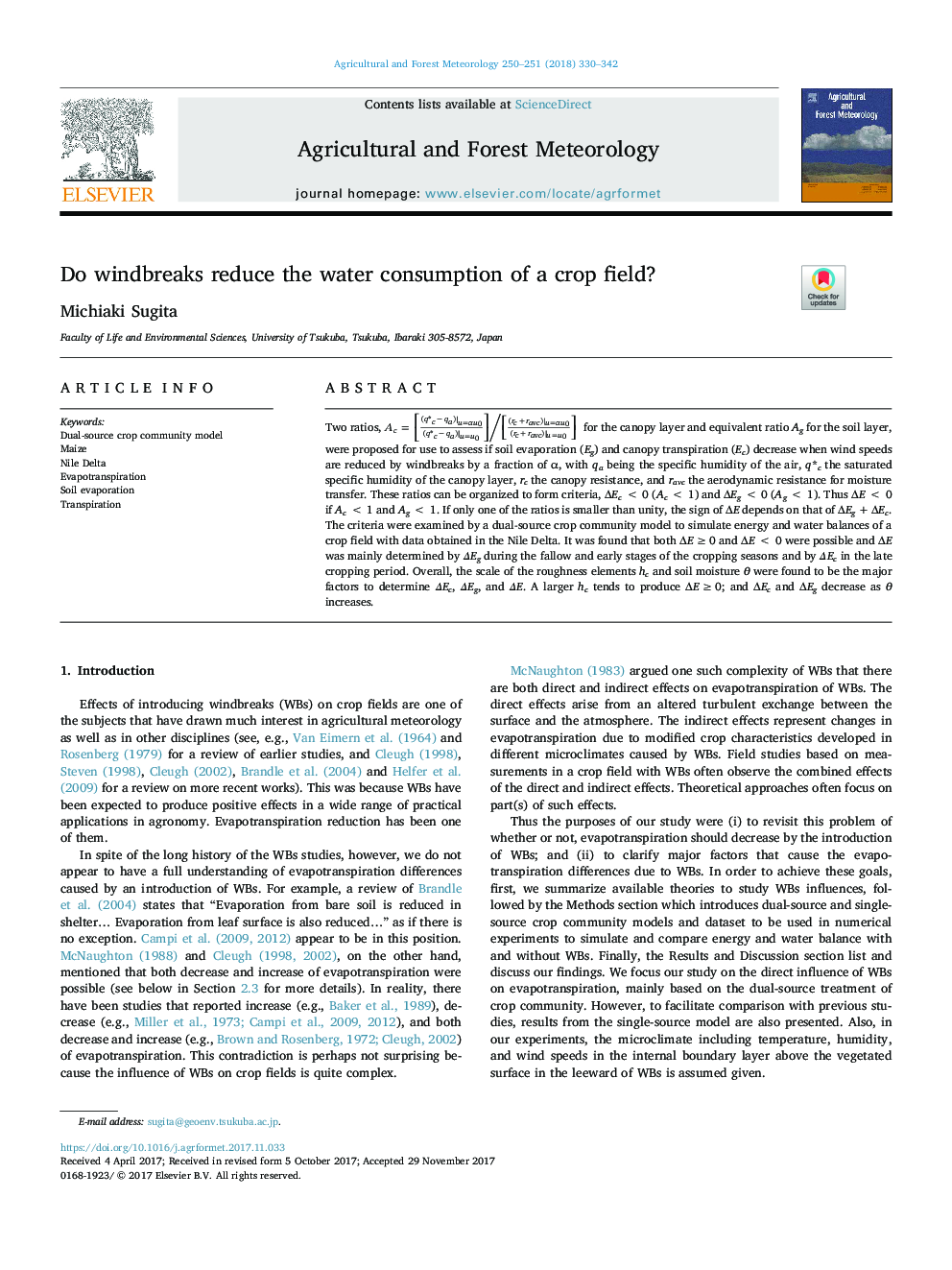| Article ID | Journal | Published Year | Pages | File Type |
|---|---|---|---|---|
| 6536823 | Agricultural and Forest Meteorology | 2018 | 13 Pages |
Abstract
Two ratios, Ac=[(q*câqa)|u=αu0(q*câqa)|u=u0]/[(rc+ravc)|u=αu0(rc+ravc)|u=u0] for the canopy layer and equivalent ratio Ag for the soil layer, were proposed for use to assess if soil evaporation (Eg) and canopy transpiration (Ec) decrease when wind speeds are reduced by windbreaks by a fraction of α, with qa being the specific humidity of the air, q*c the saturated specific humidity of the canopy layer, rc the canopy resistance, and ravc the aerodynamic resistance for moisture transfer. These ratios can be organized to form criteria, ÎEcâ¯<â¯0 (Acâ¯<â¯1) and ÎEgâ¯<â¯0 (Agâ¯<â¯1). Thus ÎEâ¯<â¯0 if Acâ¯<â¯1 and Agâ¯<â¯1. If only one of the ratios is smaller than unity, the sign of ÎE depends on that of ÎEgâ¯+â¯ÎEc. The criteria were examined by a dual-source crop community model to simulate energy and water balances of a crop field with data obtained in the Nile Delta. It was found that both ÎEâ¯â¥â¯0 and ÎEâ¯<â¯0 were possible and ÎE was mainly determined by ÎEg during the fallow and early stages of the cropping seasons and by ÎEc in the late cropping period. Overall, the scale of the roughness elements hc and soil moisture θ were found to be the major factors to determine ÎEc, ÎEg, and ÎE. A larger hc tends to produce ÎEâ¯â¥â¯0; and ÎEc and ÎEg decrease as θ increases.
Related Topics
Physical Sciences and Engineering
Earth and Planetary Sciences
Atmospheric Science
Authors
Michiaki Sugita,
